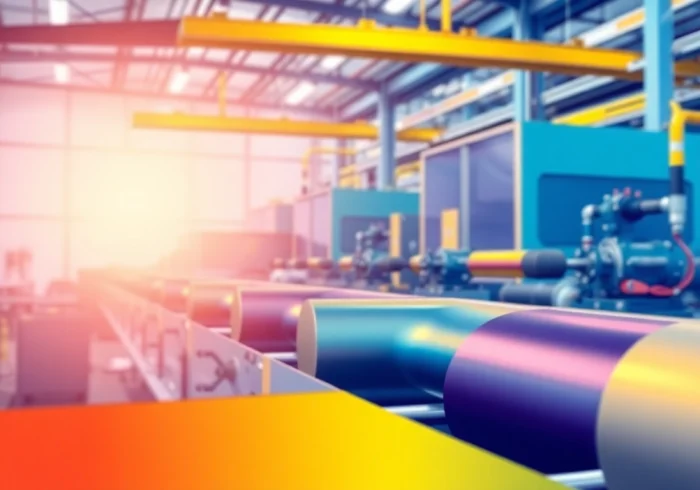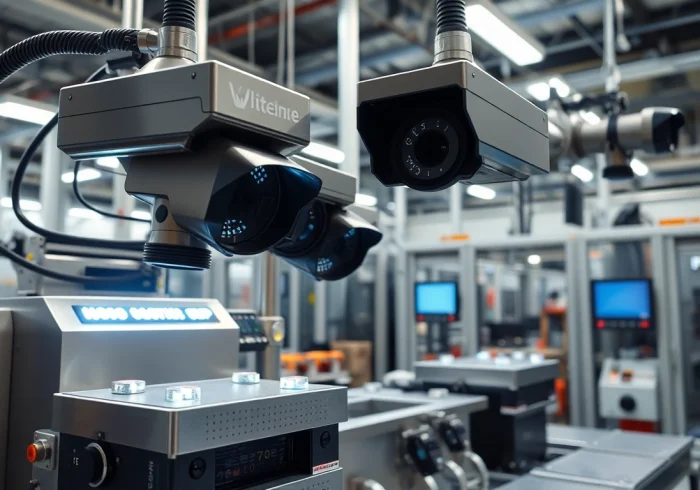Understanding Filling Machines
What is a Filling Machine?
A filling machine is a critical piece of equipment in the packaging industry, designed to automate the process of dispensing products into various containers. These containers can range from bottles and jars to pouches and tubes, holding liquids, powders, or semi-solids. Filling machines enhance efficiency, accuracy, and consistency in production lines, significantly reducing labor costs and improving product quality. Modern filling machines employ sophisticated technologies for precise dispensing and often include advanced features such as digital controls and automation for seamless operation.
The technology behind filling machines has evolved over the years. Initially, filling was a labor-intensive process that depended heavily on manual labor for accuracy and speed. However, today’s filling machines, including the Filling Machine, utilize automation to optimize production workflows. This transition not only minimizes human error but also increases productivity exponentially, making machines indispensable in various industries.
Types of Filling Machines
Filling machines can be categorized based on several criteria, including the type of product they dispense, their operation level, and the type of container they fill. Understanding these categories is essential for selecting the proper machine for specific manufacturing needs.
1. By Operation Level
- Manual Filling Machines: These machines require human operators to manage the filling process. They are ideal for small-scale productions or situations where flexibility is essential.
- Semi-Automatic Filling Machines: These machines automate part of the filling process while still requiring operator involvement for setup and monitoring. They help speed up production while allowing some level of human control.
- Fully Automatic Filling Machines: These machines operate independently, requiring minimal human intervention. They are highly efficient, ideal for high-volume production lines, and frequently incorporate advanced technologies like sensors and programmable logic controllers.
2. By Type of Product
- Liquid Filling Machines: Designed for filling liquids, these machines come in different configurations, including gravity fillers, pump fillers, and vacuum fillers.
- Powder Filling Machines: These machines handle dry products like spices or powdered chemicals, ensuring accurate weight and volume for each fill.
- Viscous Filling Machines: Built for thicker liquids such as creams and sauces, these machines utilize specific pumping mechanisms to manage the product’s viscosity.
3. By Type of Container
- Bottle Filling Machines: These are specifically designed to fill bottles of various shapes and sizes.
- Bag and Pouch Filling Machines: These machines fill flexible bags or pouches, commonly used in the food industry.
- Jar Filling Machines: Primarily used for filling rigid containers like jars, they often feature a screw capper for sealing.
Applications Across Industries
Filling machines are employed in a diverse range of industries, each with specific operational needs. Here’s a closer look at how different sectors leverage the technology:
1. Food and Beverage Industry
In the food sector, filling machines are vital for bottling sauces, juices, and other liquid-based products. They ensure compliance with safety standards, and their speed enhances production capacity, particularly for perishable goods.
2. Pharmaceutical Industry
The pharmaceutical sector relies on precise filling machines for dispensing medications into vials and bottles. Given the importance of accuracy in drug dosing and compliance with strict health regulations, these machines typically have advanced control mechanisms that ensure proper dosage.
3. Cosmetic Industry
Cosmetics manufacturers utilize filling machines for products like lotions and sprays, which require different filling techniques due to varying viscosities. These machines help maintain consistent quality and improve packaging aesthetics.
4. Chemical Industry
Filling machines play a crucial role in dispensing industrial chemicals into containers. Their robust design caters to the diverse nature of chemicals, ensuring safe and reliable packaging.
Key Components of Filling Machines
Pneumatic Systems Overview
Pneumatic systems are integral to many filling machines, utilizing compressed air to facilitate various operations. These systems typically include components like air compressors, valves, and actuators, which work together to enable precise control over product dispensing. The benefits of pneumatic systems are manifold:
- Speed: Pneumatic systems operate quickly, allowing for high-speed filling operations.
- Precision: They provide enhanced control over the product flow, reducing waste and ensuring accurate fills.
- Flexibility: Many pneumatic systems can be easily adjusted to accommodate different products and fill sizes, making them versatile in production.
Dispensing Mechanisms Explained
The dispensing mechanism of a filling machine is crucial for achieving consistent and accurate fills. Commonly used dispensing mechanisms include:
- Piston Fillers: These use a piston-driven pump to move specific volumes of product into containers, ideal for viscous and high-viscosity products.
- Gravity Fillers: These rely on gravity to control the flow of liquid into containers, best for thin liquids.
- Pressure Fillers: Utilizing air or hydraulic pressure, these machines fill products under pressure, suitable for both thick and thin liquids.
- Vacuum Fillers: By creating a vacuum, these machines are often used for filling sensitive products, minimizing air exposure during the filling process.
Control and Automation Features
Modern filling machines come equipped with a range of control and automation features that enhance operational efficiencies:
- Programmable Logic Controllers (PLCs): These devices allow for flexible programming, enabling users to adjust settings for different fill sizes and types, improving production versatility.
- Sensors: Integrated sensors can monitor fill levels, detect malfunctions, and ensure the correct operation of the machine, thus improving reliability.
- User Interfaces: Modern machines often feature touch screens or other user-friendly interfaces for easy operation and monitoring.
Selecting the Right Filling Machine
Assessing Your Production Needs
Choosing a filling machine tailored to your production needs is paramount for achieving optimal efficiency. Factors to consider include:
- Product Type: Consider the nature of your product; is it solid, liquid, or powder? Understanding its physical characteristics will guide you toward the most suitable filling machine.
- Container Type: The design and materials of the containers will influence your choice. Ensure that the machine you select can accommodate the size and shape of your containers.
- Production Volume: Assess your anticipated output levels. High-volume operations may benefit from fully automatic machines, while smaller outputs could suffice with semi-automatic or manual solutions.
Factors to Consider
When selecting a filling machine, consider additional factors that could impact your production:
- Space Considerations: Evaluate your workspace dimensions. Ensure that your chosen machine fits comfortably within the production area and allows for safe operation.
- Budget: Establish a budget, not only considering the purchase price of the filling machine but also maintenance, operational costs, and potential upgrades.
- Maintenance Requirements: Consider the upkeep needs of the machine. Automated machines may require less frequent maintenance but could have higher servicing costs.
Cost versus Value Analysis
Conducting a thorough cost versus value analysis ensures that you are making an informed investment. While the initial cost of more advanced machines might be higher, the long-term savings in labor and increased efficiency can justify the outlay. Calculate potential ROI by considering:
- Increased Throughput: More efficient filling processes can significantly raise output.
- Labor Savings: Reduced manual labor can lead to lower personnel costs.
- Reduced Waste: More accurate filling reduces product waste and can lead to cost savings on raw materials.
Best Practices for Operating Filling Machines
Machine Calibration Techniques
Calibration is essential for ensuring accuracy and reliability in filling operations. Regularly calibrating your filling machine involves:
- Routine Checks: Schedule regular inspection intervals to assess the machine’s performance and accuracy.
- Testing Samples: Fill sample containers to verify that the machine is dispensing the correct volume.
- Adjustments: Make necessary adjustments based on your findings to ensure optimal performance and accuracy.
Maintenance and Safety Protocols
Maintaining safety standards while operating filling machines is crucial for effective operations. Key maintenance practices include:
- Regular Cleaning: Implement a cleaning schedule to prevent cross-contamination between products, especially in food and pharmaceutical industries.
- Routine Inspections: Conduct periodic evaluations to detect wear and potential failures before they lead to shutdowns.
- Employee Training: Ensure that all operators are trained on safety protocols and emergency shutoff procedures are understood and practiced regularly.
Training Operators Effectively
Operator training is a pivotal factor in maximizing the effectiveness of filling machines. Consider the following approaches:
- Hands-On Training: Provide practical, in-depth training using the machines operators will utilize. This approach aids in familiarization and builds confidence.
- Regular Refreshers: Schedule periodic training sessions to reinforce best practices and safety protocols.
- Performance Monitoring: Evaluate operators’ performances regularly to identify areas for improvement in efficiency and accuracy.
Future Trends in Filling Machine Technology
Smart Technology Integration
The future of filling machines is leaning toward smart technology integration, with IoT (Internet of Things) playing a pivotal role. Features include:
- Real-Time Monitoring: Smart sensors can provide real-time data on machine performance, enabling proactive maintenance and quick adjustments to operations.
- Remote Access: Operators can access machines remotely, allowing them to troubleshoot issues and adjust settings without being physically present.
- Data Analysis: Advanced analytics can help manufacturers track performance metrics and optimize operations based on historical data.
Eco-Friendly Innovations
As industries become more environmentally conscious, the need for eco-friendly filling machines is on the rise. Innovations include:
- Energy Efficiency: New filling machines are designed with energy-efficient components that reduce overall consumption.
- Reduced Material Waste: Technologies that enhance the accuracy of fills ensure less waste of product and packaging materials.
- Recyclable Materials: Using recyclable materials in machine construction minimizes the environmental footprint.
The Rise of Customizable Solutions
As production demands evolve, so too does the necessity for filling machines that can adapt to specific requirements. Customizable filling solutions enable:
- Modular Designs: Machines that can be easily reconfigured for different products or production lines enhance versatility.
- Tailored Features: Offering bespoke machinery adjustments based on unique client specifications optimizes productivity.
- Scalability: Custom solutions can easily expand to accommodate increased production needs without requiring a complete overhaul of existing equipment.



